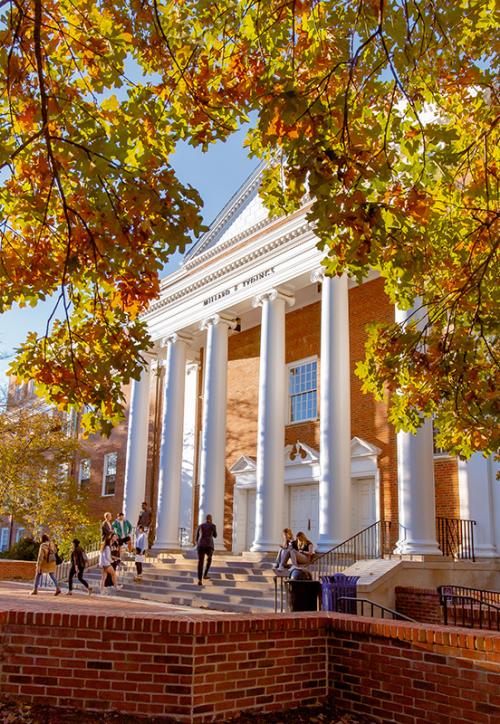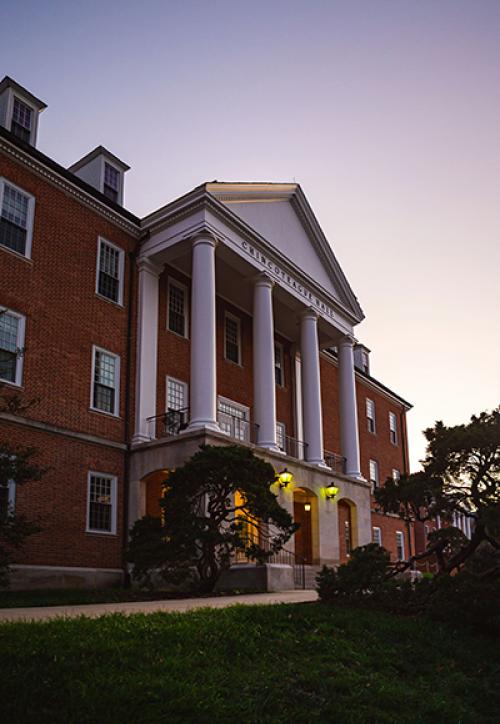$1.25M Grant Establishes New Undergraduate Research Program in HESP
The Research, Equity, and Access in Communication and Hearing (REACH) program is designed to increase ethnic, racial, and socioeconomic diversity in the field of communication sciences
With $1.25M in support from the National Institute on Deafness and Other Communication Disorders, the University of Maryland’s Department of Hearing and Speech Sciences (HESP) is launching a new program this month; a program that is designed to spark underrepresented students’ interest in pursuing careers in the communication sciences fields, or in academia.
Called “Research, Equity, and Access in Communication and Hearing” (REACH), the yearlong program provides 10-12 students who are underrepresented—on the basis of race, ethnicity, disability, or who come from first-generation and/or low-income backgrounds—with the opportunity to get paid $15/hour to work in research labs alongside UMD faculty mentors in HESP, Electrical and Computer Engineering, Linguistics, Psychology, Human Development and Quantitative Methodology, Special Education, and Biology.
In coordination with the College of Behavioral and Social Sciences’ Summer Research Initiative, students will also be provided with summer housing, eliminating another barrier that could otherwise keep students from being able to dedicate themselves to their research endeavors.
"I could not be more proud of the Department of Hearing and Speech Sciences for establishing this new program," says BSOS Dean and Psychology Professor Susan Rivera. "As a first-generation college student whose life was quite literally transformed by a research program with a similar mission, I know firsthand the positive impact that REACH will have—on its students, the field, and the world at large. I look forward to seeing this program help all of us become better equipped to Be the Solution to the world's great challenges."
Increasing diversity in the communication sciences field is a bigger-picture goal for the REACH program. According to the American Speech-Language-Hearing Association (ASHA)—the national professional, scientific, and credentialing association for 228,000 audiologists; speech-language pathologists; speech, language, and hearing scientists; audiology and speech-language pathology support personnel; and students—only roughly 9% of ASHA members and affiliates self-identify as being part of a racially minoritized group.
“Hearing and speech science is typically a discovery field; when they're in middle school, people think that they want to be a lawyer or they want to be a doctor, but very few people think about being in hearing and speech,” explains Rochelle Newman, Professor and Chair of the HESP Department. “We hope this program will bring new and diverse students to our major, to our labs, and to the field.”
Newman goes on to explain that even if a student does take an early interest in the hearing and speech field, those from financially disadvantaged backgrounds frequently turn away upon realizing that a graduate degree is required for most professions. Beyond the potential issue of graduate school being too costly to attend, such students often run into other issues. Those issues include finding the time to meet graduate schools’ application requirements—many need to spend their hours outside of the classroom working instead of gaining clinical or research experiences—and, particularly for those who are first-generation college students, not knowing as much about the process of applying to graduate school.
Therefore, in addition to being paid 10 hours/week during the academic year and 40 hours/week for 10 weeks during the summer, students will also receive professional development training.
UMD’s many undergraduate research opportunities make the REACH program stand out as well, says HESP Professor Matthew Goupell: "The University of Maryland has numerous substantive undergraduate research opportunities; particularly in Hearing and Speech Sciences, where over 50% of our majors get research experience in a lab before they graduate. UMD is the perfect place to have a program that increases the diversity of the scientific and biomedical workforce.”
Published on Wed, Aug 2, 2023 - 9:35AM



